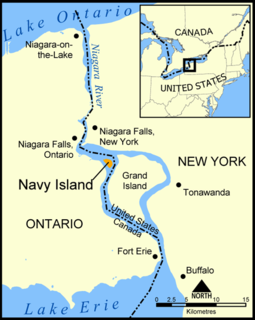 W
WThe Upper Canada Rebellion was an insurrection against the oligarchic government of the British colony of Upper Canada in December 1837. While public grievances had existed for years, it was the rebellion in Lower Canada, which started the previous month, that emboldened rebels in Upper Canada to revolt.
 W
WThe Battle of Montgomery's Tavern was an incident in the Upper Canada Rebellion. The abortive revolutionary insurrection inspired by William Lyon Mackenzie was crushed by British authorities and Canadian volunteer units near a tavern on Yonge Street, Toronto.
 W
WThe Battle of the Windmill was a battle fought in November 1838 in the aftermath of the Upper Canada Rebellion. Loyalist forces of the Upper Canadian government and American troops, aided by the Royal Navy and U.S. Navy, defeated an invasion attempt by a Hunter Patriot para-military unit based in the United States, which had the intention of using the beachhead as a launchpad for further offensives into Canada. Canadian, British, and American troops thwarted the invasion, successfully defending Canadian soil and forced the invaders to surrender. Others still in the U.S. were captured and arrested by U.S. officials.
 W
WThe Caroline affair was a diplomatic crisis beginning in 1837 involving the United States, Britain, and the Canadian independence movement. It began in 1837 when William Lyon Mackenzie and other Canadian rebels, with support from US citizens, fled to an island in the Niagara River, in the ship Caroline. British forces crossed the Niagara River, to board and capture the vessel where it was moored, at Schlosser's Landing, in US territory. Shots were exchanged and one U.S. citizen, a watchkeeper, was killed. British forces set fire to the Caroline and set it adrift in the Niagara River, about two miles above Niagara Falls. Sensationalized accounts of the affair were published by contemporary newspapers.
 W
WWilliam Dunlop also known as Tiger Dunlop, was an army officer, surgeon, Canada Company official, author, justice of the peace, militia officer, politician, and office holder. He is notable for his contributions to the War of 1812 in Canada and his work in the Canada Company, helping to develop and populate a large part of Southern Ontario. He was later elected as a Member of Parliament for the Huron riding in the 1st Parliament of the Province of Canada, Canada West.
 W
WNavy Island is a small, uninhabited island in the Niagara River in the province of Ontario, managed by Parks Canada as a National Historic Site of Canada. It is located about 4.5 kilometres upstream from Horseshoe Falls, and has an area of roughly 1.2 km2. It was designated a national historic site in 1921 in recognition of its role in shipbuilding and the location of the short-lived Republic of Canada. The site is closed to the public, has no visitor facilities, and has not allowed camping since the expiration of a lease with the Niagara Parks Commission.
 W
WThe Patriot War was a conflict along the Canada–United States border where bands of raiders attacked the British colony of Upper Canada more than a dozen times between December 1837 and December 1838. This so-called war was not a conflict between nations; it was a war of ideas fought by like-minded people against British forces.
 W
WThe Republic of Canada was a government proclaimed by William Lyon Mackenzie on December 5, 1837. The self-proclaimed government was established on Navy Island in the Niagara River in the latter days of the Upper Canada Rebellion.